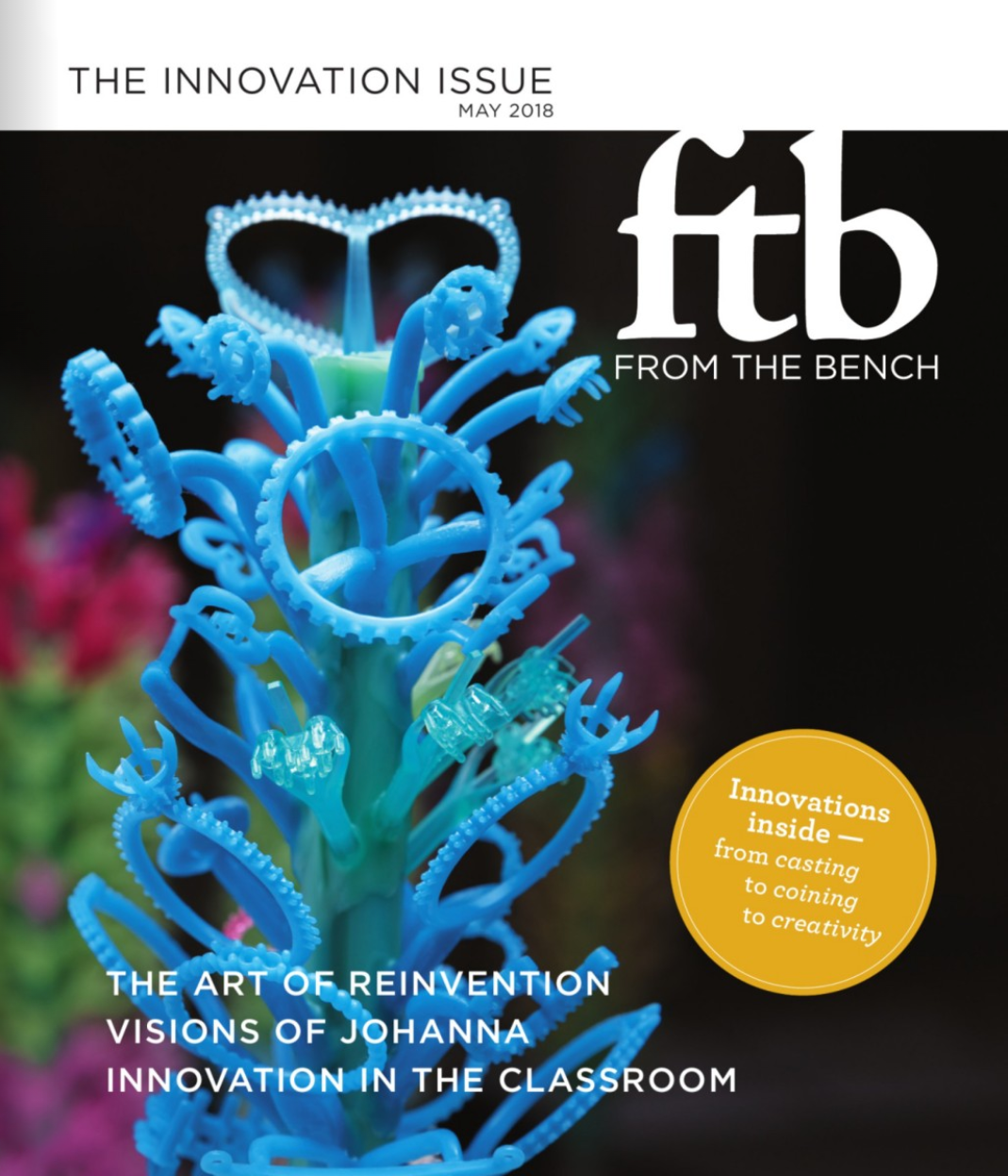
Jewelry
from the bench | may 2018
Written while employed at Stuller.
Excerpts -
The Art of Reinvention
Master Jeweler and Designer Greg Neeley’s Journey of Discovery and Innovation
When I first spoke to Greg, he had just found out he was one of five finalists in the gold/platinum category for the 2018 Saul Bell Award, an international contest for jewelry designers. He won in 2013 and hopes to win this year, but competition is fierce.
He designs modern jewelry, and many pieces feature unusual prong-free settings. Each creation reflects the craftsmanship you'd expect of an industry veteran with 40+ years of experience.
Greg has made an art of changing with industry demands by using his ability to reinvent himself, his craft, and his dreams. To understand, look to his early years in a sparsely populated corner of Colorado.
At 16, Greg left school and joined his older brother's jewelry manufacturing business, Cortez Silver and Turquoise Co. It was 1972. "The craze for Southwest Native American jewelry was taking off," he says. "It was an opportunity to make and sell high-quality silver and turquoise Navajo jewelry. I saw jewelry as a substitute for my real dream of being a sculptor."
The business grew, eventually employing 40 Navajo artisans. They cast 2,000 rings per week and handmade an additional 1,000. Greg's brother had his pilot's license, so the company bought a small Cessna to travel the Southwest selling their products.
Innovation in the Classroom
Preparing Students for Today’s Marketplace
Blaine Lewis, founder and owner of NAJS, has spent 22 years training jewelers more than 7,000 as of this year, "For the first few years, I spent two months on the road and two weeks at home. I was on a mission to bring new, innovative techniques to the industry, It's still my goal."
Blaine created the Tactile Sensory Development imprinting (TSDI) teaching model used at NAJS, This hands-on approach uses high magnification microscopy, 3D animations, and fine motor skill training. Blaine developed innovative camera techniques and technologies, and students sit at fully equipped benches to gain direct experience with equipment they'd have no access to otherwise.
Recently NAJS moved to its permanent home: a 9,000-square-foot facility on 27 acres in Arrington, Tennessee. "We designed NAJS in the shape of a diamond so we took our time looking for the perfect setting," Blaine says. "And I wanted enough land for the school to evolve to meet the changing needs of future bench jewelers. We want to start a CAD/CAM program with Matrix®, and we have the space to do that. The challenge is finding an instructor"
NAJS classrooms have the latest high-definition cameras and screens for macro video instruction. And the student workbenches have the latest in microscopes, lighting, and other 21st-century jewelry. making equipment in a beautiful setting where they can focus on learning and achieving their dreams.

